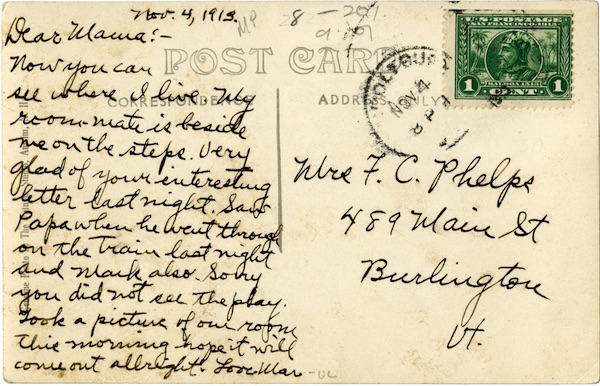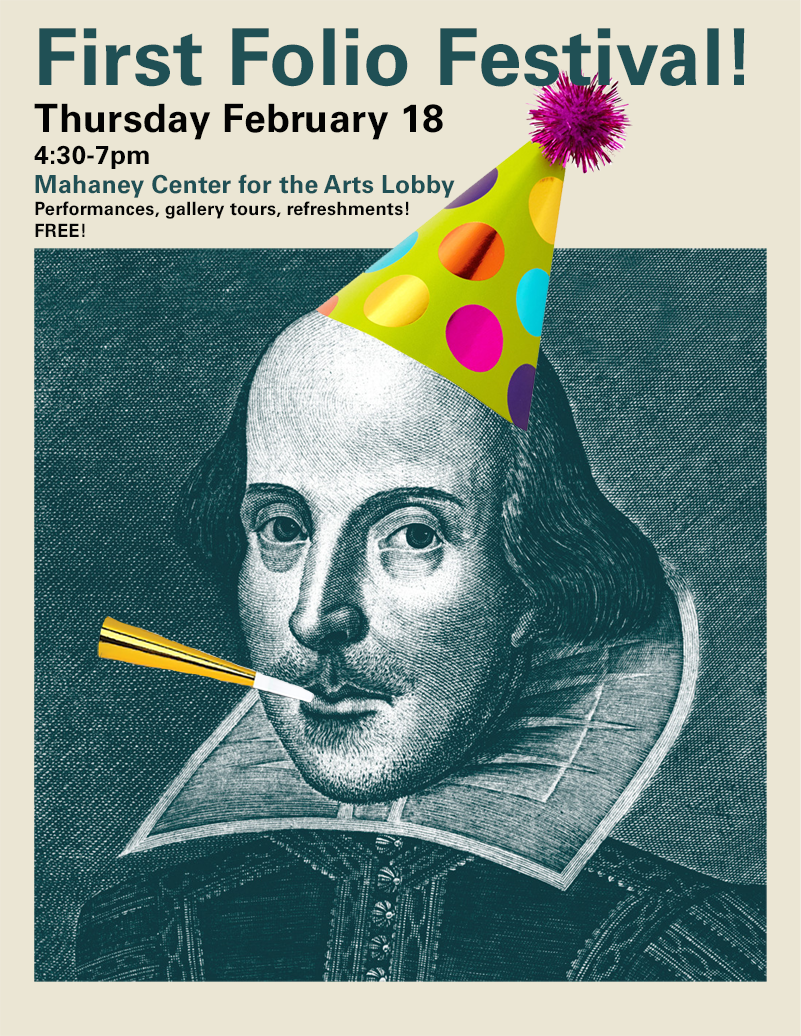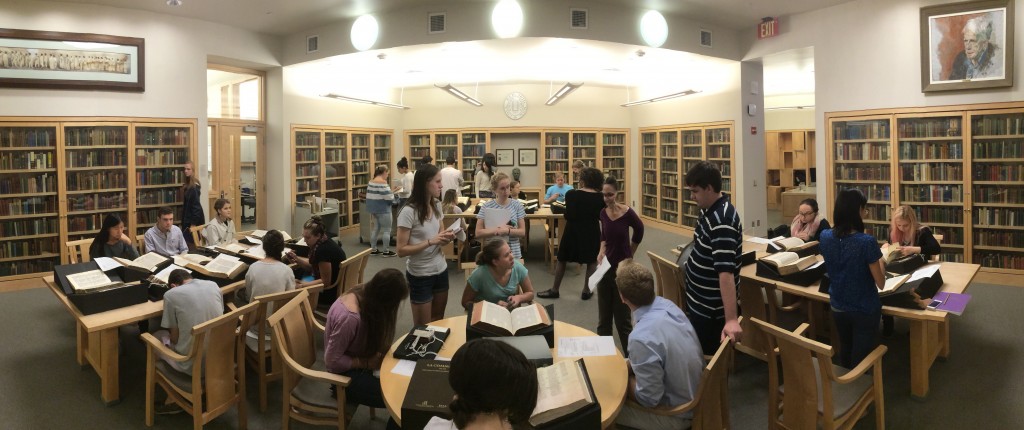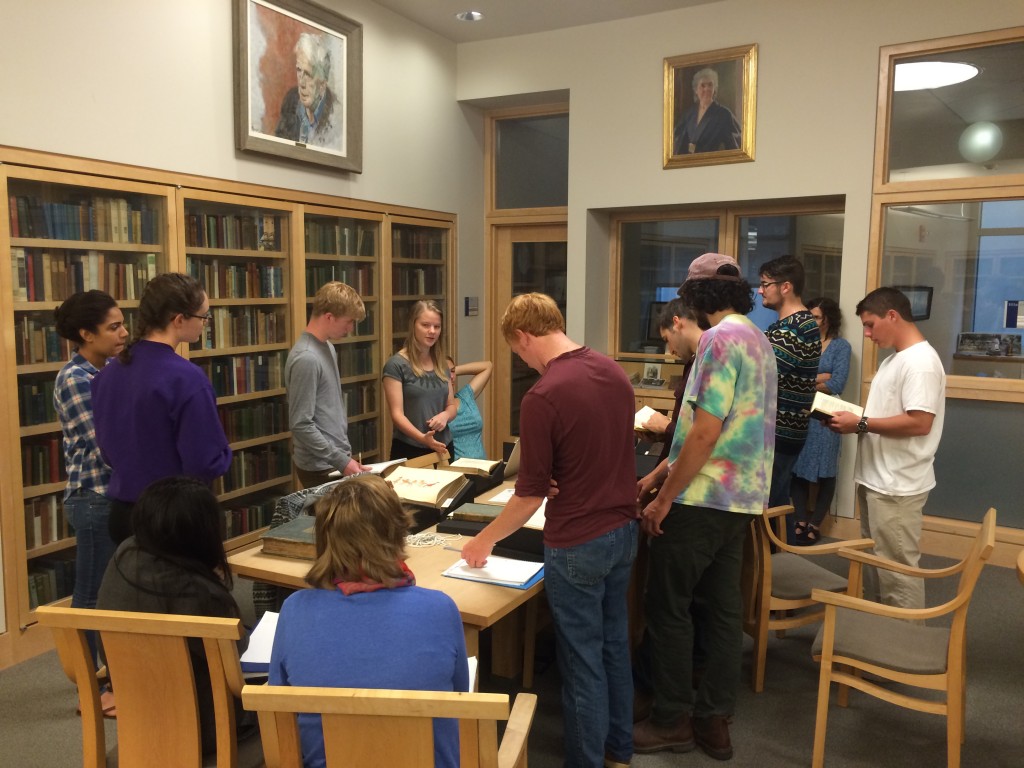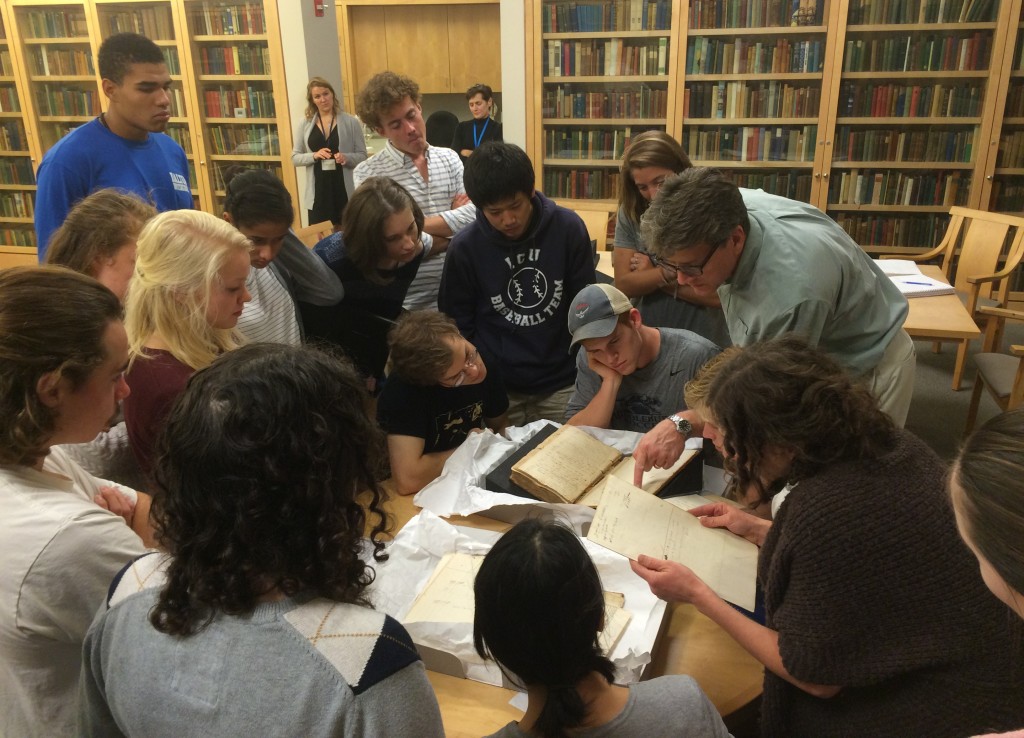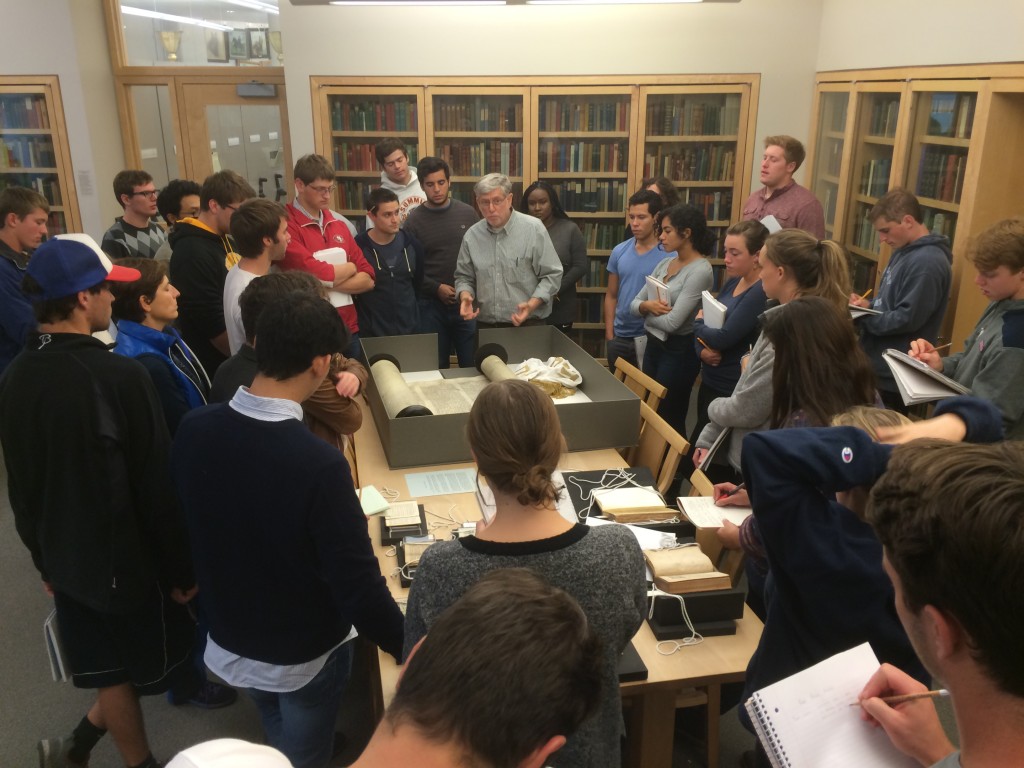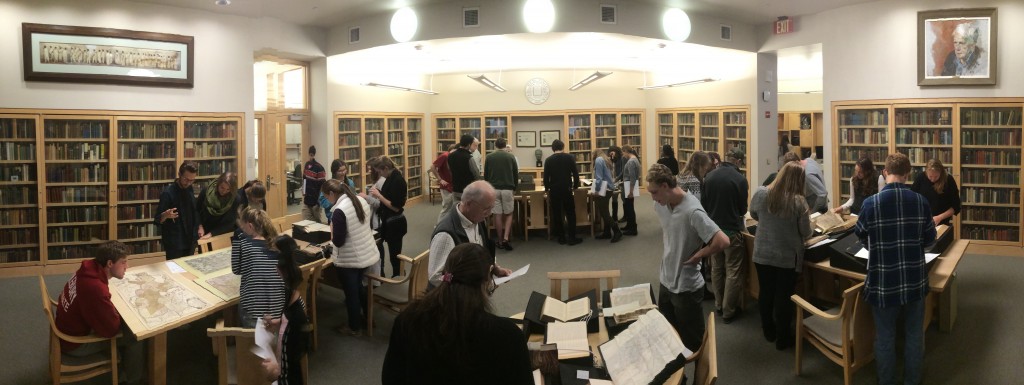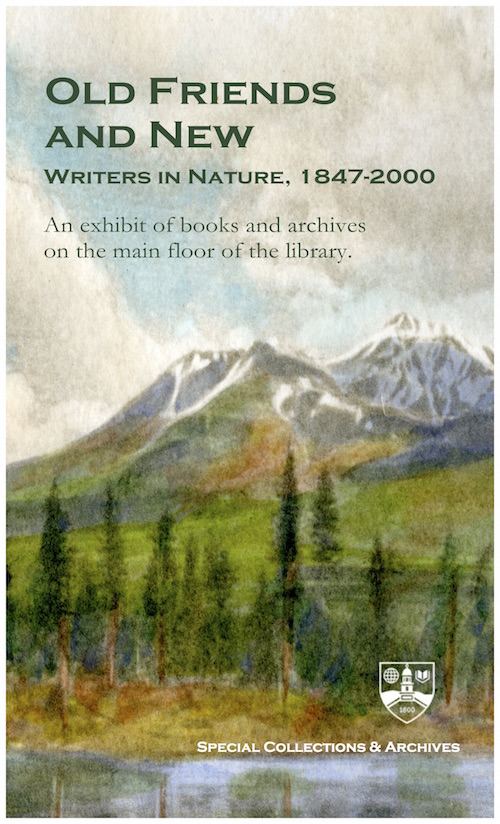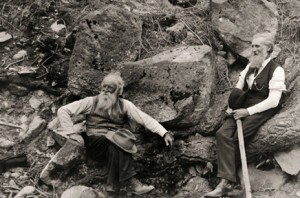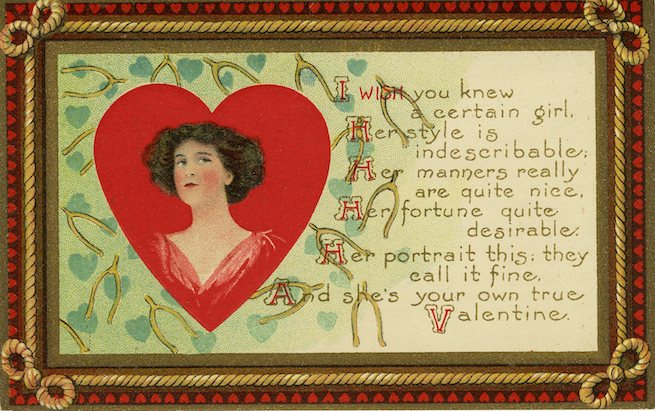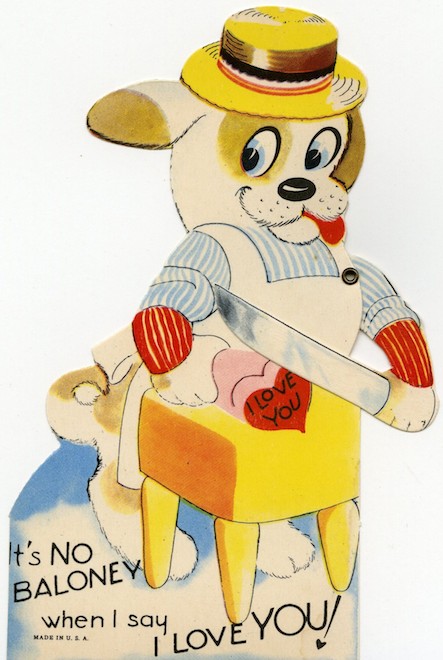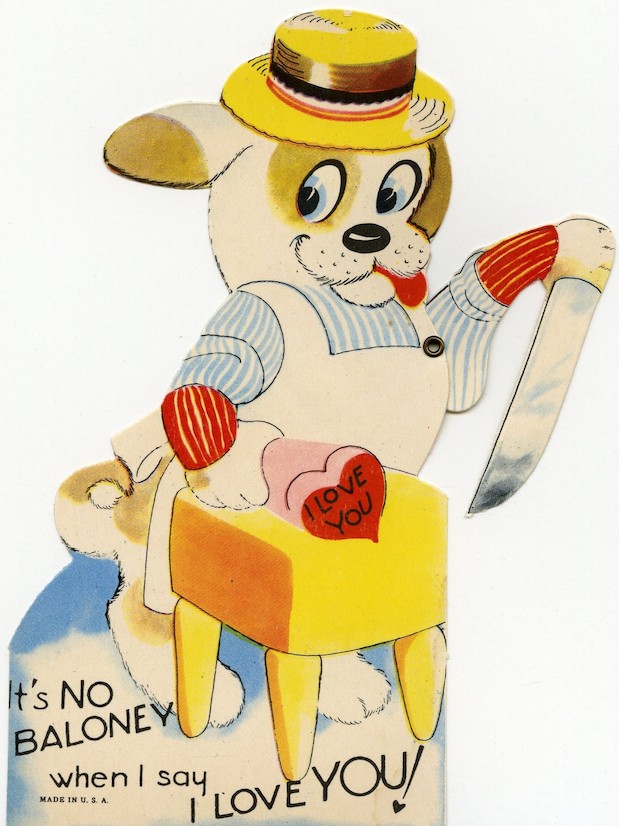Today in Special Collections, our oldest text faced the library’s newest technology.
Our cuneiform tablet, a beer token from 2,000 BCE, took a new form when DLA postdoctoral fellow Kristy Golubiewski-Davis captured it in a 3D scan.

To see 3D scanning in action – along with the tablet and other important Special Collections objects – come to Davis Family Library this Friday! Kristy will by demonstrating 3D scanning in the library atrium from 10am-2pm, and Special Collections will host our annual Fall Family Weekend Open House from 1pm-4pm.
And stay tuned for a 3D printout made from the scan coming soon, a plastic facsimile students and researchers can inspect in their own hands!
